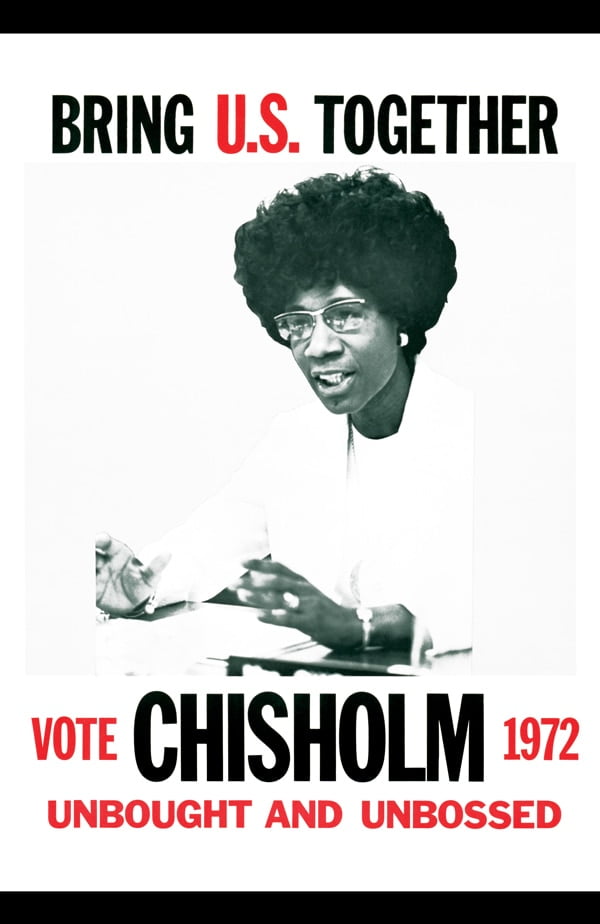

In 1964, Chisholm ran for and was elected to the New York State Legislature. From 1959 to 1964, she was an educational consultant for the Division of Day Care. She was a member of the Delta Sigma Theta Sorority.įrom 1953 to 1959, she was director of the Hamilton-Madison Child Care Center. If I speak and write easily now, that early education is the main reason."Ĭhisholm is an alumna of Girls' High School, she earned her BA from Brooklyn College in 1946 and later earned her MA from Columbia University in elementary education in 1952. In her 1970 autobiography Unbought and Unbossed, she wrote: "Years later I would know what an important gift my parents had given me by seeing to it that I had my early education in the strict, traditional, British-style schools of Barbados.

She did not return until roughly seven years later when she arrived in New York City on May 19, 1934, aboard the S.S. At age three, Chisholm was sent to Barbados to live with her maternal grandmother, Emaline Seale, in Christ Church where she attended the Vauxhall Primary School. Her mother, Ruby Seale, was born in Christ Church, Barbados, and arrived in New York City aboard the S.S. Hill, was born in British Guiana and arrived in the United States via Antilla, Cuba, on April 10, 1923, aboard the S.S.


Hill was born in Brooklyn, New York, of immigrant parents. Instead, she pledged to fight for the interests of all Americans who had been “boxed out of the opportunities to participate equally and enthusiastically in building a strong and just society.” Although Chisholm’s campaign drew widespread popular support, as well as an endorsement from the Black Panther Party, she did not receive public endorsements from either the National Black Political Convention or from major national women’s organizations, and she lost the Democratic Party nomination to Senator George McGovern.Shirley Anita St. While challenging the barriers of race and gender that she experienced as a Black woman, she refused to position herself as a candidate who was solely focused on the interests of African Americans, or the interests of women. She outlined a platform that reflected the social justice policies she had worked for in Congress, including the fight against poverty and racial discrimination. In January 1972, Shirley Chisholm announced her candidacy for president of the United States. Together,” poster for Shirley Chisholm’s presidential campaign, 1972


 0 kommentar(er)
0 kommentar(er)
